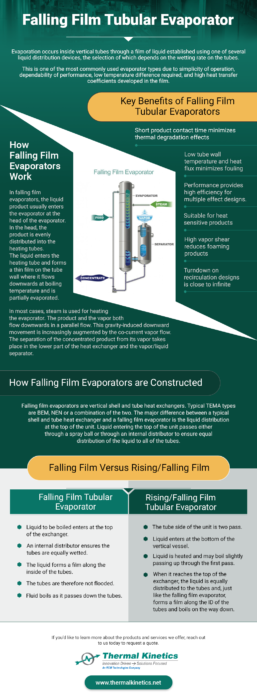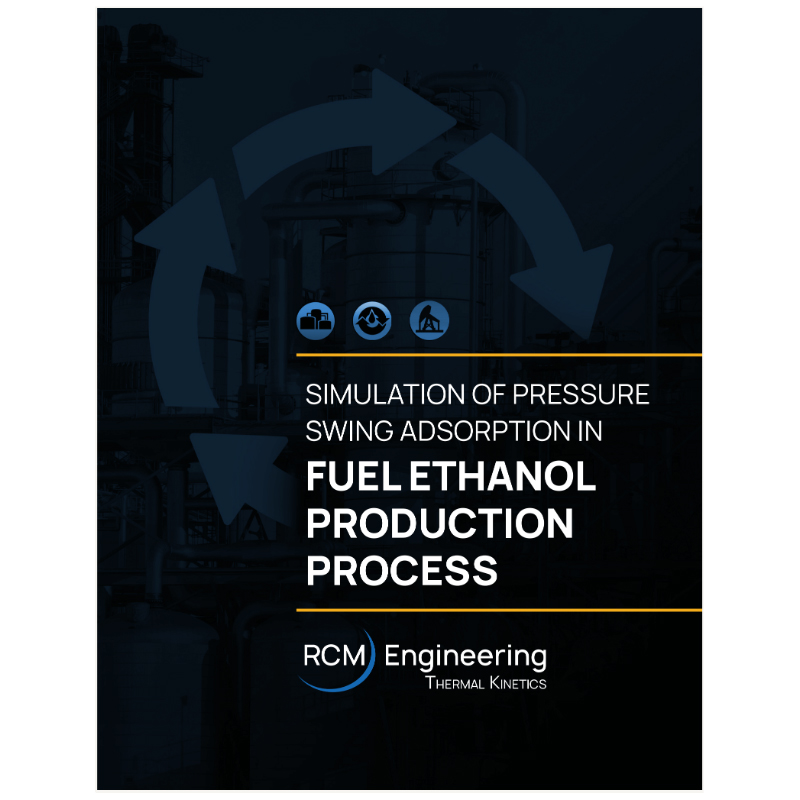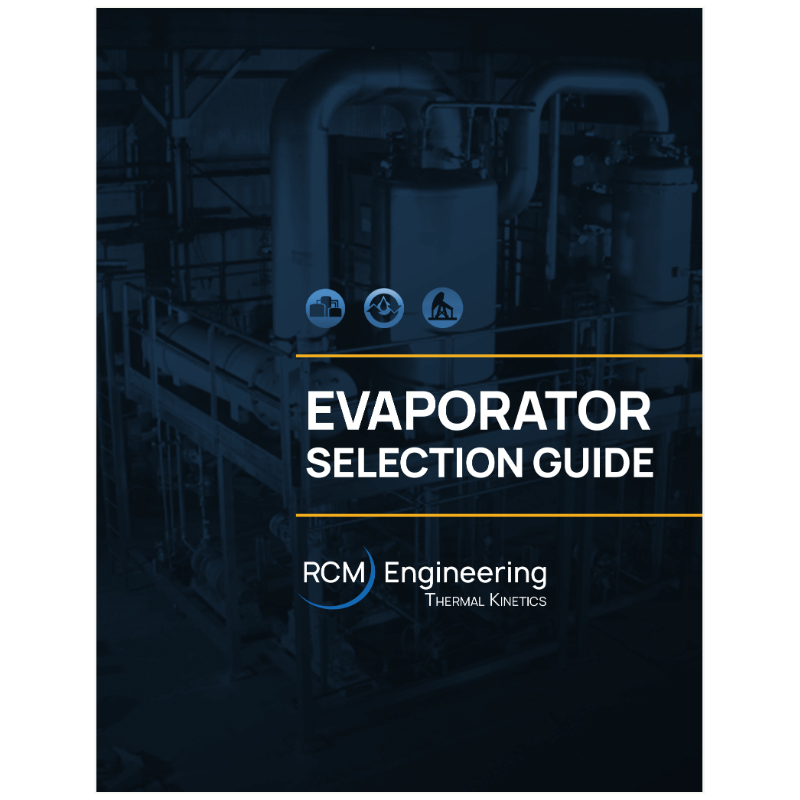Evaporation occurs inside vertical tubes through a film of liquid established using one of several liquid distribution devices, the selection of which depends on the wetting rate on the tubes.
This is one of the most commonly used evaporator types due to simplicity of operation, dependability of performance, low temperature difference required, and high heat transfer coefficients developed in the film.
Key Benefits of Falling Film Tubular Evaporators
- Short product contact time minimizes thermal degradation effects
- Low tube wall temperature and heat flux minimizes fouling
- Performance provides high efficiency for multiple effect designs.
- Suitable for heat sensitive products
- High vapor shear reduces foaming products
- Turndown on recirculation designs is close to infinite
How Falling Film Evaporators Work
In falling film evaporators, the liquid product usually enters the evaporator at the head of the evaporator. In the head, the product is evenly distributed into the heating tubes. The liquid enters the heating tube and forms a thin film on the tube wall where it flows downwards at boiling temperature and is partially evaporated. In most cases, steam is used for heating the evaporator. The product and the vapor both flow downwards in a parallel flow. This gravity-induced downward movement is increasingly augmented by the co-current vapor flow. The separation of the concentrated product from its vapor takes place in the lower part of the heat exchanger and the vapor/liquid separator.
How Falling Film Evaporators are Constructed
Falling film evaporators are vertical shell and tube heat exchangers. Typical TEMA types are BEM, NEN or a combination of the two. The major difference between a typical shell and tube heat exchanger and a falling film evaporator is the liquid distribution at the top of the unit. Liquid entering the top of the unit passes either through a spray ball or through an internal distributor to ensure equal distribution of the liquid to all of the tubes.
Falling Film Versus Rising/Falling Film
| Falling Film Tubular Evaporator | Rising/Falling Film Tubular Evaporator |
|
|
We understand what wetting rates, heat transfer coefficients, and proper distribution systems are required for long term successful operation.
Industry Applications
Falling film evaporators are an excellent choice in terms of providing a heat exchanger with a higher tube side coefficient than other style exchangers. These can be used in the following industry applications:
| Food Processing Industry | ||
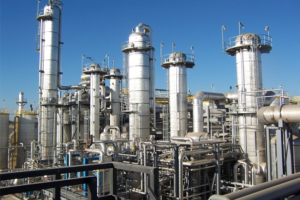 |
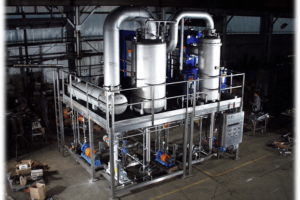 |
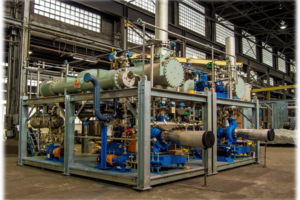 |



